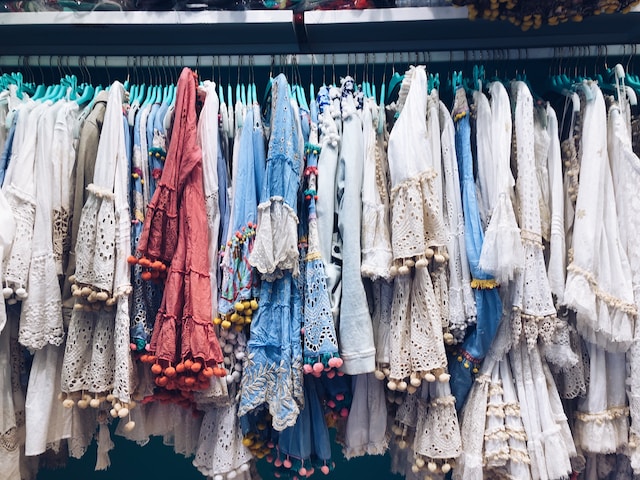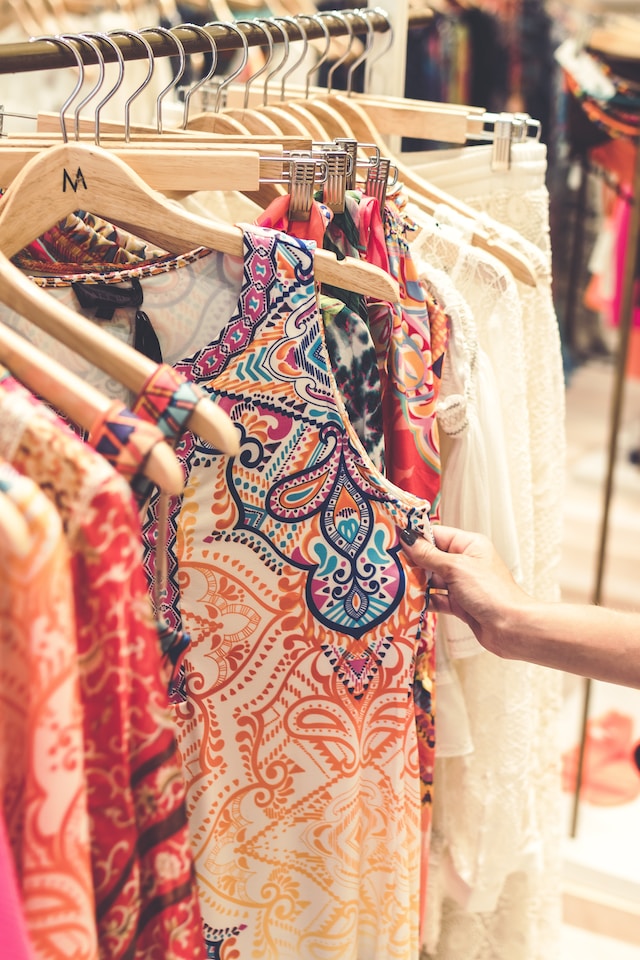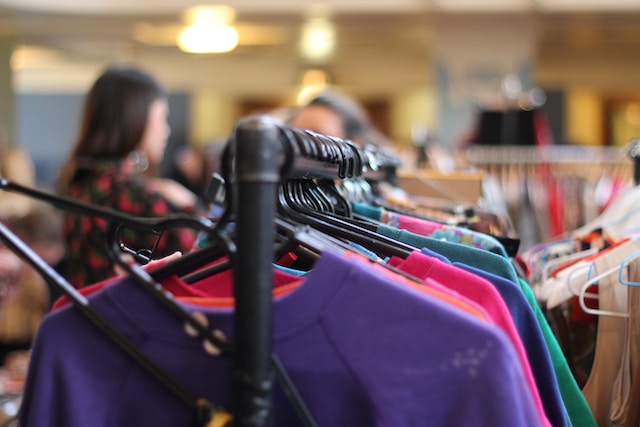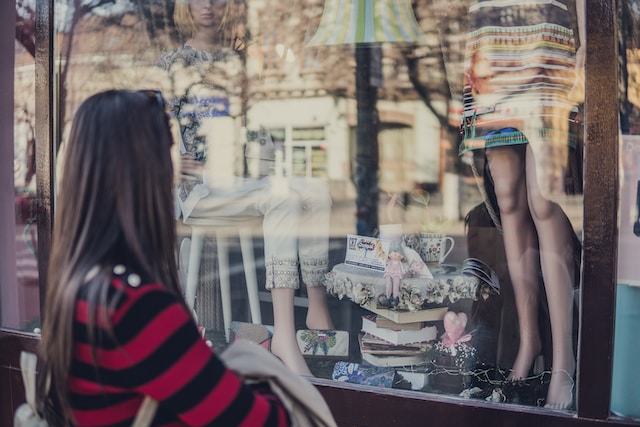
Stepping into a vintage store is like stepping back in time, immersed in a treasure trove of timeless styles and forgotten stories. From the elegant fashion of the 1920s to the rebellious looks of the 1980s, vintage shopping offers a unique opportunity to add a touch of history and individuality to your wardrobe. But navigating the vast world of vintage clothing can be overwhelming for newcomers. Fear not, this comprehensive vintage shopping guide will enlighten you with invaluable tips and tricks, making your journey into the world of vintage fashion a seamless and unforgettable one.
Preparation Before You Shop
Before embarking on your vintage shopping adventure, it is important to familiarize yourself with different fashion eras and the iconic styles associated with each. Take some time to research fashion trends from the 1920s to the 1990s, noting the key characteristics that define each era. This will not only help you narrow down your search but also enable you to recognize authentic vintage pieces when you come across them.
- Assessing Your Wardrobe
Before diving headfirst into the vintage racks, take a moment to assess your current wardrobe and identify any gaps that vintage pieces could fill. Consider which eras or styles resonate with your personal taste and which will complement your existing collection. This preliminary evaluation will give you a clear vision of what you are looking for and help you make focused decisions while shopping.
- Setting a Budget
Vintage shopping can be addictive, with countless unique and enticing pieces begging to be added to your collection. To avoid breaking the bank, it is crucial to set a budget beforehand. Decide on a reasonable amount of money you are willing to spend, keeping in mind that certain eras or designers may come with a higher price tag. By establishing a budget, you can ensure that your vintage shopping experience remains fun and fulfilling without wreaking havoc on your finances.
- Choosing the Right Venue
Vintage clothing can be found in various places, from small boutiques to flea markets and online platforms. Research local thrift stores and vintage shops in your area, noting their specialties and customer reviews. Consider their reputations for authenticity, quality, and variety, as this will greatly affect the range of options available to you. Additionally, exploring online marketplaces or auction sites can broaden your vintage hunting ground, offering access to a wider selection from all over the world.
- Clothing Measurements
Vintage garments often come in sizes that differ from today’s standard sizing. To ensure a proper fit, it is essential to take accurate body measurements before shopping. Arm yourself with a measuring tape and record your bust, waist, hip, and inseam measurements. Keep these measurements handy when browsing vintage clothing, as sellers usually provide detailed measurements in their listings. Remember, fit is key to rocking a vintage look, so don’t be discouraged if a piece is labeled with a different size – focus on the actual measurements to find your perfect fit.

Choosing the Right Vintage Store
When it comes to vintage shopping, the store you choose to explore can make all the difference in finding that perfect one-of-a-kind piece. Here are some essential factors to consider when selecting a vintage store:
Reputation and Authenticity: In your quest for authentic vintage fashion, reputation is everything. Look for stores with a solid reputation for selling genuine vintage items. Seek out recommendations from friends or online forums dedicated to vintage fashion enthusiasts. Authenticity is paramount, as it ensures that you are investing in a piece of fashion history, rather than a modern replica.
Specialties and Collection Range: Each vintage store has its own unique specialties and collection range. Some stores may have a wide variety of clothing from different eras, while others may focus on specific styles or even niche interests like vintage designer labels or vintage sports apparel. Determine your personal preferences and make sure the store you choose aligns with your style and interests.
Customer Service: A friendly and knowledgeable staff can enhance your vintage shopping experience immensely. Look for stores where the staff members are passionate about vintage fashion and are willing to assist you in finding the perfect piece. Their expertise can guide you towards hidden gems and offer valuable insights into the history behind each item.
Quality and Condition: When hunting for vintage clothing, quality is key. Check if the store takes pride in curating a collection of well-preserved, clean, and wearable vintage pieces. Avoid stores that only offer items in poor condition or with extensive damage. A reputable vintage store will have strict quality control measures, ensuring that their inventory meets a certain standard of excellence.
Pricing Structure: Vintage fashion comes in a range of price points, depending on factors such as rarity, condition, and designer labels. Verify if the store’s pricing structure aligns with your budget. Some stores may charge a premium for highly sought-after pieces, while others may have more affordable options. Consider the overall value of the pieces in relation to their quality and uniqueness.
Inspecting and Evaluating Vintage Pieces
When it comes to shopping for vintage clothing, it’s important to carefully inspect and evaluate each piece before making a purchase. Here are some key tips to keep in mind:
Material and Construction
- Examine the fabric closely, looking for any signs of wear, fraying, or discoloration.
- Check for loose threads, missing buttons, or broken zippers. While minor repairs can be made, extensive damage may affect the overall value and wearability of the garment.

- Pay attention to the overall construction quality. Vintage clothing was often made with attention to detail and better craftsmanship, so look for well-finished seams and hems.
Stains and Odors
- Look for any stains or spots on the garment, both on the surface and under natural light. Determine if these stains are removable or if they have become set over time.
- Take note of any lingering odors, such as mustiness or smoke. While some odors can be eliminated with proper cleaning, others may be more challenging to remove completely.
Sizing and Fit
- As mentioned earlier, vintage sizing can differ significantly from modern sizing standards. Always refer to the provided measurements and compare them to your own body measurements to ensure a proper fit.
- Take into account the style and silhouette of the garment. Some vintage pieces may have been designed to be more fitted or have a different cut than contemporary clothing.
Labels and Tags
- Check for original labels and tags, as they can provide valuable information about the brand, designer, and era of the garment.
- Research the brand or designer if you are unfamiliar with them to gauge their reputation and value within the vintage market.
Authenticity and Reproductions

- Be aware of reproductions and knock-offs, especially for popular or highly sought-after pieces. Look for any signs of reproduction, such as modern fabrics, care labels, or manufacturing techniques.
- If you’re uncertain about the authenticity of a vintage piece, consult with an expert or do further research to ensure you’re making an informed decision.
Trying On and Fitting
When it comes to vintage shopping, trying on the clothing is an essential part of the process. However, vintage garments can present unique challenges when it comes to fit and sizing. Here are some tips and tricks to make sure you find the perfect fit:
Dress for Success: When heading to a vintage store, wear comfortable and form-fitting clothing that will allow you to easily try on garments over them. Opt for a simple and neutral outfit that won’t distract from the vintage pieces you’ll be trying on.
Prepare for Different Sizing: As mentioned before, vintage sizing can be vastly different from modern sizing. Keep an open mind and be prepared to try on items that may be labeled with a different size than you are accustomed to. Remember to rely on your body measurements rather than the size on the label.
Take Your Time: Trying on vintage clothing requires patience and time. Don’t rush the process and allocate enough time for each item you want to try on. Vintage garments may have different closures, such as buttons or hooks, that can take a bit longer to fasten and unfasten.
Embrace Alterations: Don’t be discouraged if a vintage piece doesn’t fit you perfectly off the rack. Vintage clothing was often tailored to fit the original owner, so alterations may be necessary to achieve your desired fit. If you fall in love with a piece that is slightly too big or long, consider visiting a professional tailor who specializes in vintage alterations. They can work their magic and transform the garment to suit your body perfectly.

Assess the Fit: When trying on vintage clothing, pay close attention to how the garment fits your body. Look out for any areas that may be too tight, too loose, or simply not flattering. Consider the length, waistline, bust, and shoulders to determine if the piece can be altered to fit you better.
Experiment with Styling: Vintage clothing offers endless possibilities for experimentation and creativity. Don’t be afraid to try different styles and pairings to make the garment truly your own. Play around with accessories and different footwear to see how you can transform a vintage piece into a contemporary outfit.
Remember, vintage shopping is all about uncovering hidden gems and embracing the beauty of the past. By following these tips and tricks, you’ll be well-prepared to navigate the world of vintage fashion with confidence and find unique pieces that perfectly reflect your personal style. Happy vintage shopping!
